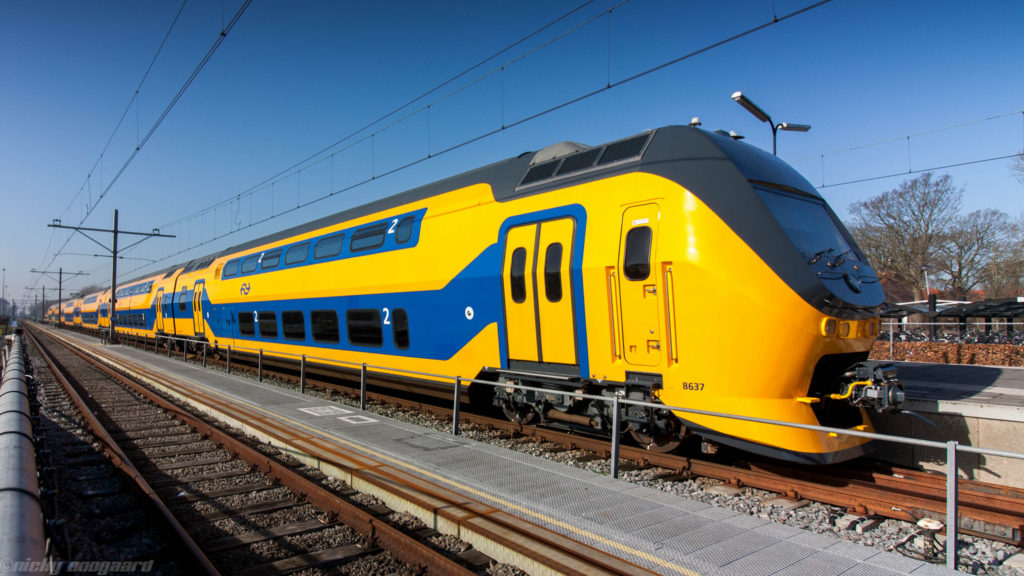Wind-Powered Trains: Reducing Pollution And Saving Energy

Table of Contents
The Technology Behind Wind-Powered Trains
Harnessing the power of the wind to propel trains requires innovative engineering solutions. Several methods are being explored to achieve this ambitious goal.
Harnessing Wind Energy
-
Trackside Wind Turbines: This approach involves strategically placing wind turbines along railway lines. The generated electricity would then be fed into the train's power system via overhead lines or ground-based power collection systems. This method offers scalability, as turbines can be added incrementally along existing routes. However, it requires significant upfront investment in infrastructure and careful consideration of land use and visual impact.
-
Onboard Wind Turbines: Smaller, integrated wind turbines could be incorporated onto the trains themselves. While this concept is more challenging from an engineering perspective, it offers a degree of energy independence, reducing reliance on external power sources. However, the efficiency of onboard turbines is limited by their size and the variability of wind speeds. Advancements in lightweight, high-efficiency turbine designs are crucial for this approach.
-
Hybrid Systems: A combination of trackside and onboard wind turbines could offer the most efficient and reliable solution. Trackside turbines could provide the bulk of the power, supplemented by onboard turbines during periods of low wind or when navigating sections without trackside generation. Sophisticated energy management systems would be needed to optimize power distribution and storage.
-
Energy Storage and Transmission: Efficient energy storage is crucial, as wind is an intermittent energy source. Battery technology, along with advancements in supercapacitors, plays a critical role in ensuring a consistent power supply to the trains. Reliable and high-capacity energy transmission systems are also vital for seamless integration with the existing rail infrastructure.
Integration with Existing Rail Infrastructure
Integrating wind power generation into existing railway infrastructure presents significant logistical challenges.
-
Land Acquisition and Permitting: Securing land for wind turbine installation along railway lines can be complex, requiring careful environmental impact assessments and navigation of various regulatory approvals.
-
Cost and Economic Feasibility: The initial investment in wind turbines, energy storage, and the necessary modifications to existing train systems and tracks can be substantial. Comprehensive cost-benefit analyses are essential to ensure economic viability.
-
Trackside Modifications: Existing railway lines may require modifications to accommodate wind turbine infrastructure. This could involve adjustments to trackside clearances, signaling systems, and safety protocols. Compatibility with high-speed rail networks presents an additional hurdle.
Environmental Benefits of Wind-Powered Trains
The environmental advantages of wind-powered trains are significant, contributing to a more sustainable transportation system.
Reduced Carbon Footprint
Switching from traditional diesel or electric trains (powered by fossil fuel-generated electricity) to wind-powered trains offers substantial reductions in greenhouse gas emissions.
- Quantifiable Reductions: Studies suggest that widespread adoption of wind-powered trains could reduce CO2 emissions by hundreds of thousands, even millions, of tons annually, depending on the scale of implementation and the specific energy mix of the electricity grid.
- Improved Air Quality: Reduced reliance on fossil fuels translates directly into improved air quality in urban areas, particularly along heavily trafficked rail routes. This is crucial for public health and environmental protection.
Reduced Reliance on Fossil Fuels
Wind-powered trains represent a significant step towards energy independence and a reduction in reliance on volatile fossil fuel markets.
- Energy Security: By harnessing a domestic, renewable energy source, wind-powered trains contribute to enhanced energy security, reducing vulnerability to global energy price fluctuations and geopolitical instability.
- Sustainable Transportation: The transition to wind power significantly lowers the overall carbon footprint of the rail transport sector, aligning with global sustainability goals and commitments to reducing climate change.
Economic Advantages of Wind-Powered Trains
Beyond the environmental benefits, wind-powered trains offer compelling economic advantages.
Long-Term Cost Savings
While the initial investment in wind-powered train technology may be substantial, the long-term operational costs are likely to be significantly lower.
- Reduced Fuel Costs: Wind power is a virtually free energy source (excluding maintenance and infrastructure costs). This drastically reduces the ongoing fuel expenses compared to diesel or electricity-powered trains.
- Lower Maintenance Costs: Although wind turbines require maintenance, the reduced reliance on combustion engines could lead to lower overall maintenance costs in the long run.
- Return on Investment: Long-term cost savings, combined with potential government incentives and carbon credits, can create an attractive return on investment for infrastructure development and train modernization.
Job Creation and Economic Growth
The development and implementation of wind-powered train technology can stimulate economic growth and create jobs across various sectors.
- Manufacturing and Construction: The manufacturing of wind turbines, energy storage systems, and other related components will generate employment opportunities. The construction of new infrastructure will further boost employment in the construction and engineering sectors.
- Maintenance and Operations: Ongoing maintenance and operation of wind turbines and related systems will create long-term job opportunities.
- Technological Advancements: Research and development in wind energy technology and its integration with rail transport will drive innovation and create high-skilled jobs.
Challenges and Future Prospects of Wind-Powered Trains
Despite the significant potential, several challenges remain in the development and deployment of wind-powered trains.
Technological Hurdles
Overcoming technological limitations is crucial for the widespread adoption of wind-powered trains.
- Efficient Energy Storage: Developing more efficient and cost-effective energy storage solutions is critical to address the intermittency of wind power.
- Wind Variability: Wind speed fluctuations necessitate advanced power management systems to ensure a reliable power supply to the trains, even in low-wind conditions.
- Infrastructure Robustness: Building and maintaining a reliable and robust wind-powered rail infrastructure requires careful planning, design, and ongoing maintenance.
Policy and Regulatory Considerations
Supportive policies and regulations are essential to encourage investment and facilitate the adoption of wind-powered trains.
- Government Incentives: Government subsidies, tax credits, and other financial incentives can significantly reduce the initial investment costs and accelerate the deployment of wind-powered train systems.
- Environmental Regulations: Stringent environmental regulations can further encourage the transition to clean energy sources, including wind power for rail transport.
- Regulatory Frameworks: Clear and consistent regulatory frameworks are needed to streamline the permitting and approval processes for wind turbine installations along railway lines.
Conclusion
Wind-powered trains offer a compelling solution for reducing pollution and saving energy in the rail transport sector. While technological and regulatory challenges remain, the potential environmental and economic benefits are significant. Reduced carbon emissions, energy independence, and long-term cost savings make wind-powered trains a promising avenue for a sustainable transportation future. The future of rail transport may well be powered by the wind. Let's invest in research and development of wind-powered trains to build a cleaner, more sustainable future for all. Learn more about the ongoing initiatives and support organizations working towards this goal at [Link to relevant resources/organizations].

Featured Posts
-
 Fortnites Wwe Collaboration Obtaining Cody Rhodes And The Undertaker Skins
May 03, 2025
Fortnites Wwe Collaboration Obtaining Cody Rhodes And The Undertaker Skins
May 03, 2025 -
 Andrew Goldstone Joins Milk And Honey As Head Of Electronic
May 03, 2025
Andrew Goldstone Joins Milk And Honey As Head Of Electronic
May 03, 2025 -
 Conservative Infighting Tory Chairmans Stand Against Populism
May 03, 2025
Conservative Infighting Tory Chairmans Stand Against Populism
May 03, 2025 -
 Is Labour Becoming The Nasty Party A Political Analysis
May 03, 2025
Is Labour Becoming The Nasty Party A Political Analysis
May 03, 2025 -
 Presiden Erdogan Di Indonesia Kerjasama Ekonomi Dan Pertahanan Menjadi Fokus Utama
May 03, 2025
Presiden Erdogan Di Indonesia Kerjasama Ekonomi Dan Pertahanan Menjadi Fokus Utama
May 03, 2025
